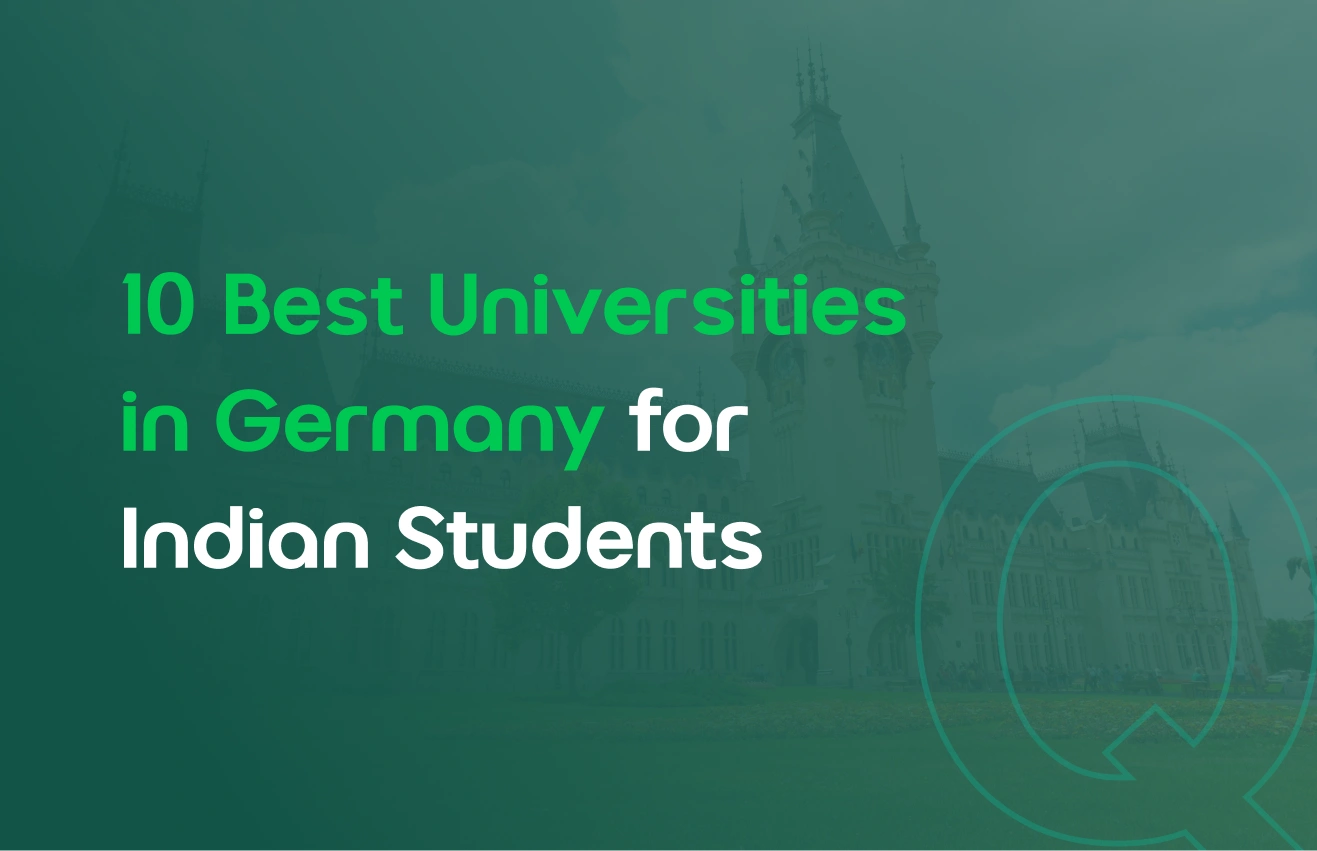
Cost of Studying in France for Indian Students
Have you ever dreamed of studying in France, walking down cobblestone streets after class, sipping coffee at a cosy café, and soaking in the culture while working on your next project?
Share this Article

Table of contents
If you’re thinking about studying abroad, you’ve probably got a bunch of questions in your head. Which country is right for me? Will I fit in there? Will it be too expensive? Those doubts are normal, and honestly, they matter a lot.
For many students today, South Korea is turning into that dream destination where you can study well, live safely, and still enjoy life. It’s got world-class universities, affordable education, modern technology, and a culture that’s just so alive. The best part is the number of Indian students heading there keeps growing every single year.
So, in this blog, we’ll go over everything: why South Korea is becoming a top study spot, what benefits it offers, how much it costs, and how scholarships and part-time work can help you manage your budget better.
Let’s start from the beginning.
Choosing where to study isn’t only about tuition fees. You want a place that gives you a good education, a safe environment, and room to grow. South Korea pretty much ticks all those boxes.
To begin with, the number of international students is huge. In 2024, over 208,000 foreign students were studying in South Korea. That says a lot about how open and welcoming the country is. You’ll find programs taught in both English and Korean, so even if you’re not fluent in Korean yet, you can still get started easily.
Some of the world’s top universities are here: Seoul National University, KAIST, Yonsei University, and POSTECH. The tuition fees are also quite reasonable compared to countries like the US or the UK. For example:
The government is also working on increasing international enrolment to 3 lakhs by 2027, which shows how much they value global students.
And Korea itself is a beautiful blend of old and new, with centuries-old temples right next to shiny glass towers. There’s this special energy there; modern, disciplined, yet full of warmth.
Alright, now that you’ve got a quick idea of why students choose South Korea, let’s move into what exactly makes it worth it.
You’ll meet people from all over the world, which means new friendships, cultural exchange, and maybe even future career collaborations. The exposure alone can shape your thinking and confidence in ways that classroom learning never could.
Once you see how much Korea offers, the next thing to figure out is how much it’ll cost you overall.
| Cost Component | Annual Estimate (INR) | Notes |
|---|---|---|
| Tuition (Undergrad) | ₹2,50,000 – ₹7,00,000 | Depends on course and university |
| Living Expenses | ₹6,00,000 – ₹10,50,000 | Includes housing, food, utilities |
| Student Visa & Immigration | ₹50,000 – ₹1,00,000 | Includes documents, insurance, visa fee |
| Personal & Misc. Costs | ₹1,00,000 – ₹2,00,000 | Books, travel, leisure, etc. |
| Total Estimate | ₹10,00,000 – ₹18,50,000 | Approx yearly cost |
| Level | Common Subjects | Duration | Avg. Tuition (INR) |
|---|---|---|---|
| Undergraduate | Engineering, Business, Design | 3–4 years | ₹2,50,000 – ₹7,00,000 |
| Postgraduate | Tech, Arts, Management | 2 years | ₹3,00,000 – ₹8,50,000 |
| PhD | Science, IT, Humanities | 3–5 years | ₹2,50,000 – ₹6,00,000 |
| University | Avg. Annual Tuition (INR) | Famous For |
|---|---|---|
| Seoul National University | ₹3,50,000 – ₹7,00,000 | Engineering, Business |
| KAIST | ₹4,00,000 – ₹8,00,000 | Tech, Science |
| Yonsei University | ₹4,50,000 – ₹9,00,000 | Medicine, Arts |
| Korea University | ₹4,00,000 – ₹8,50,000 | Law, Economics |
| POSTECH | ₹3,80,000 – ₹7,50,000 | Physics, Computer Science |
| Scholarship | Coverage | Details |
|---|---|---|
| Global Korea Scholarship (GKS) | Full tuition, airfare, stipend (~₹90,000/month) | Government-funded for undergrad and postgrad students |
| Korean Government Support Program | Partial tuition + living allowance | For self-funded students with good grades |
| University Scholarships | 30%–100% tuition waiver | Offered by top universities like Yonsei and KAIST |
| POSCO Asia Fellowship | Full tuition + living expenses | For master’s students from Asia |
| Samsung Global Hope Scholarship | Tuition + stipend | For students from developing nations including India |
| Expense | Monthly Cost (KRW) | Monthly Cost (INR) | Notes |
|---|---|---|---|
| Accommodation | ₩400,000 – ₩1,200,000 | ₹25,000 – ₹75,000 | Dorms are cheaper |
| Food & Groceries | ₩200,000 – ₩400,000 | ₹12,000 – ₹25,000 | Cooking saves money |
| Transport | ₩50,000 – ₩100,000 | ₹3,000 – ₹6,000 | Student passes help |
| Utilities & Internet | ₩80,000 – ₩150,000 | ₹5,000 – ₹9,000 | Shared apartments cost less |
| Personal Expenses | ₩100,000 – ₩250,000 | ₹6,000 – ₹15,000 | Includes phone, clothes, fun stuff |
The good news is that you can work part-time while studying. If you have a D-2 student visa, you’re allowed to work up to 20 hours a week during semesters and full-time during vacations.
Most students find jobs at cafes, convenience stores, restaurants, or as tutors. The hourly pay is usually around ₩9,800 to ₩12,000 (₹600–₹750). It might not cover everything, but it definitely helps with groceries or rent. Plus, you gain local work experience and improve your Korean while you’re at it.
Studying in South Korea isn’t just about getting a degree. It’s about the whole experience. You learn from great professors, live in a safe and modern country, meet new people, and grow in ways that truly prepare you for the real world. And with affordable education and scholarships, Korea is becoming one of the most realistic options for Indian students today.
If you’re planning to study in Korea but need financial help, QCK Loans can make the process simpler. We help students get quick loan disbursals and flexible repayment options so you can focus on your studies instead of stressing about money. And, if you’re unsure which country would be a right fit for your career goals, contact Career Gyan.
Need Help in education loan
FAQs
You can reduce your costs through scholarships, on-campus housing, and part-time work because students on a D-2 visa can work up to 20 hours a week, earning around ₹600–₹750 per hour, which can help you cover daily expenses.
Latest article

Cost of Studying in France for Indian Students
Have you ever dreamed of studying in France, walking down cobblestone streets after class, sipping coffee at a cosy café, and soaking in the culture while working on your next project?

10 Best Universities in Germany for Indian Students
Thinking about studying in Germany but not sure which university to choose? You’re not alone. With hundreds of world-class institutions and countless courses to explore, it’s easy to feel lost when deciding where to apply.

Top PhD Scholarships for Indian Students to Study Abroad
You’ve probably dreamt of doing your PhD at a top university somewhere abroad. Sounds exciting, right? But once you start checking the tuition fees, research costs, and living expenses, that dream suddenly feels a little too expensive. For many Indian students, it almost seems out of reach.
WhatsApp us